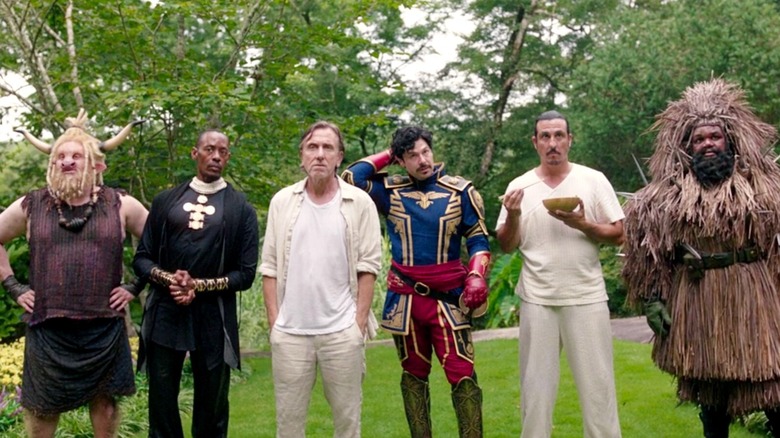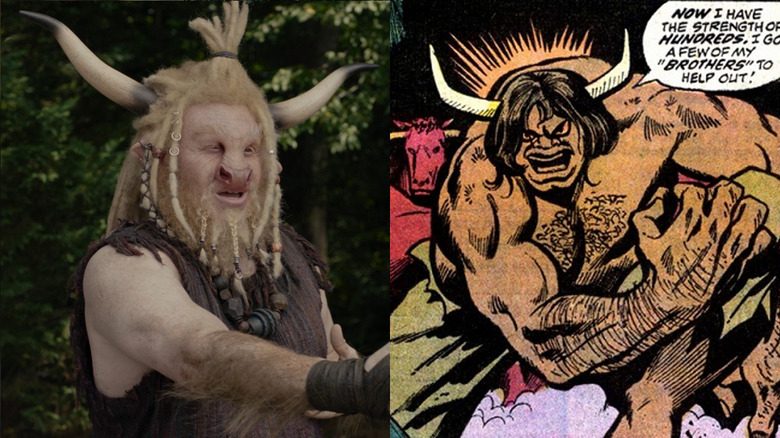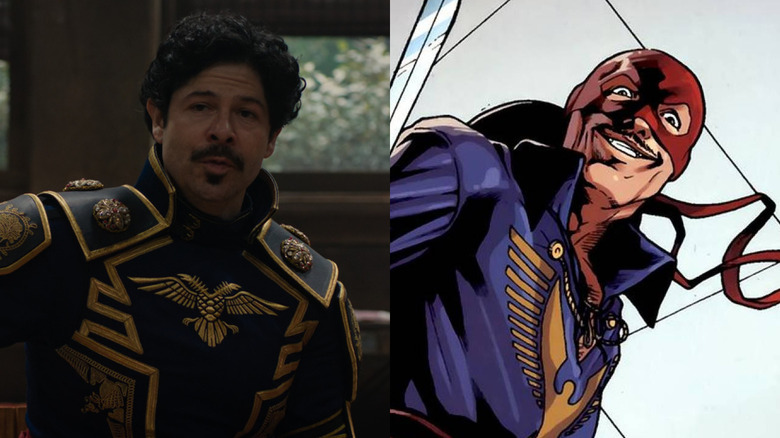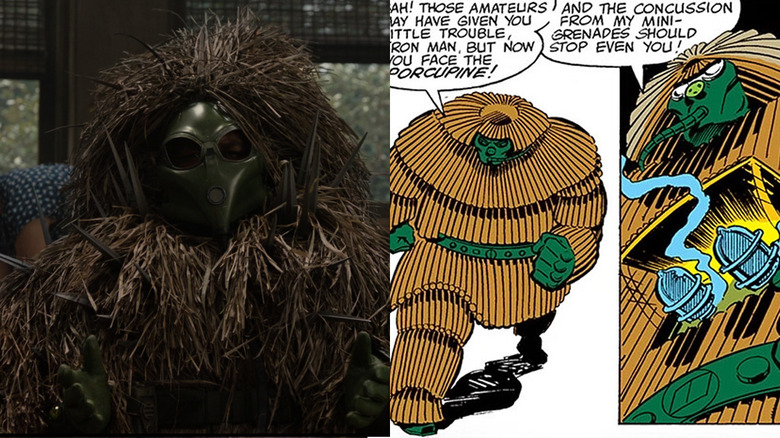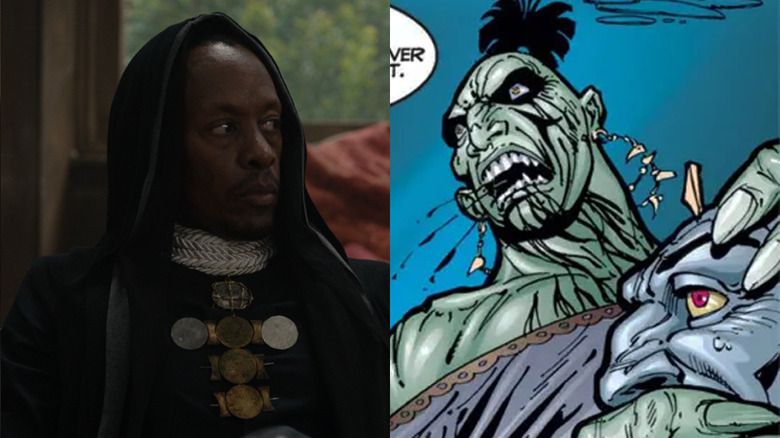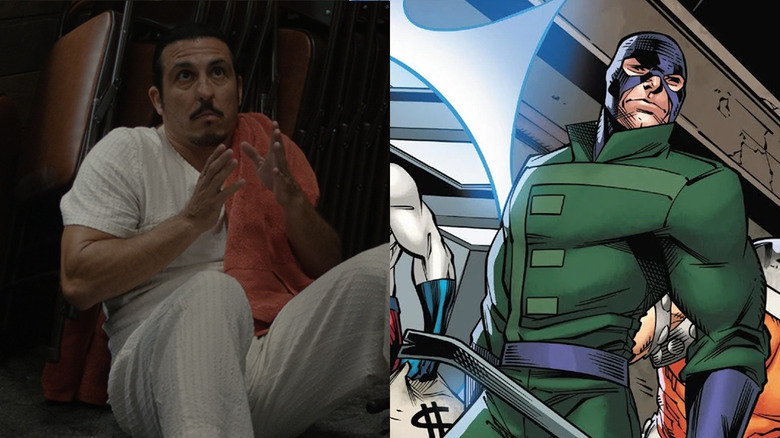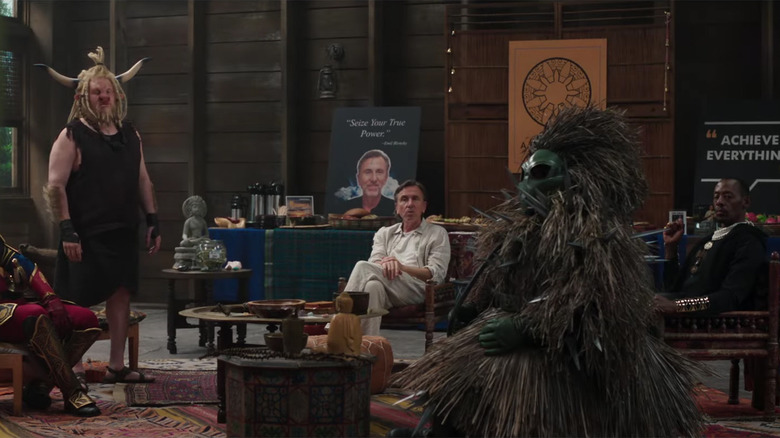Meet She-Hulk's Supervillain Support Group And Their Comic Book Counterparts
This article contains spoilers for the seventh episode of "She-Hulk: Attorney At Law."
The latest episode of "She-Hulk: Attorney At Law" expands the Marvel Cinematic Universe in some significant ways with obscure parts of the comic book canon. When Jennifer Walters (Tatiana Maslany) is called upon to visit her client Emil Blonsky (Tim Roth), she encounters a supervillain support group. The reformed "Incredible Hulk" antagonist is now dishing out treatment for fellow villains who want to turn their life around. Instead of an episode where She-Hulk battles some baddies, Walters is forced to reconcile with her own insecurities with the help of a close-knit group of supervillains that are pulled straight from the source material.
"She-Hulk" uses a bevy of lesser-known characters from the Marvel Comics canon to fill out the roster seen in the seventh episode. From Man-Bull to the Porcupine, there is a lot to unpack (and comics to read), if we want to find out exactly where the streaming series got these zany characters from. Spoiler alert: there is a mutant on this list.
Man-Bull
William Taurens (Nathan Hurd), aka Man-Bull, is arguably more bull than man in the comics. He is indeed the product of an experiment by a mad scientist named Mr. Kline, but Taurens had a hand in his devious actions. A henchman for the villainous scientist, he was instructed to kidnap random civilians for dangerous experiments. But when Daredevil stopped the kidnappings, Taurens was punished for failing his mission by putting him through the experiment. He became a huge half-man, half-bull that was far more menacing than his MCU counterpart. Nevertheless, it may not be a coincidence that the villain was more often than not an enemy of Daredevil, who will show up on "She-Hulk" later this season.
El Águila
Played by Joseph Castillo-Midyett, Alejandro Montoya aka El Águila makes his MCU debut in "She-Hulk." Born in Spain, the swashbuckling swordsman finds himself in California, but in the comics, he moved to New York City to fight crime with his superpowers. The on-again, off-again ground-level hero is considered a champion of the poor and fights crime for a living, and he has occasionally teamed up with the likes of Iron First and Luke Cage. However, Águila sometimes finds himself on the wrong side of justice, fighting Hawkeye and other superheroes. He is based on the Spanish outlaw and renowned fictional hero Zorro.
In the comics, the bio-electricity that shoots from his sword is actually a result of his mutant powers. It's not confirmed in "She-Hulk" whether the MCU version of Águila is a mutant, but it's pretty safe to assume that he is. After all, they just confirmed another major mutant will be introduced very, very soon.
Porcupine
Many have served under the Porcupine mantle, but Alexander Gentry (Jordan Aaron Ford) is the first man to wear the spikey outfit that is strangely comic-accurate in "She-Hulk." A weapons designer for the United States Army, Gantry was a talented individual that was way in over his head. Using a nearly indestructible suit (that shot quills as offensive measures), the supervillain often fought and lost to members of the Avengers, including Ant-Man, the Wasp, and Iron Man. As one could imagine, Porcupine's failures caught up to him, and eventually felt obligated to team up with other supervillains.
Out of the many villains that appear in the support group, Porcupine's comic history makes him perfect for the support group.
Sacaren
Not to be confused with the Punisher villain of the same name, Sacaren (Terrence Clowe) was a low-tier supervillain that encountered Blade during his 1999 comic run. One of the first vampires on Earth, Sacaren is considered a part of an ancient group of centuries-old vampires, including Nosferatu. Despite his age, Sacaren is by far the most obscure villain from the supervillain support group and is pretty different from his MCU counterpart outside his blood-sucking desires. Clowe does play a pretty hilarious part in the episode, at least.
Wrecker
Introduced in the third episode, the Wrecker (Nick Gomez) is a part of a supervillain group known as, wait for it, the Wrecking Crew. He attacked She-Hulk once along with his criminal buddies, but seems to be formed by the time this week's episode comes around. In the comics, Dirk Garthwaite aka the Wrecker was a common criminal before gaining career-altering superpowers from an Asgardian goddess after stealing from Loki (yeah, comics used to be very unhinged). Utilizing just a crowbar and his combat skills, he went toe-to-toe with Thor himself and other Avengers-level characters. The Wrecker should be considered the well-known villain that appears in the "She-Hulk," even if he does not possess the superhuman abilities of his comic book counterpart.
Will the support group return?
Although "She-Hulk" does enjoy dropping easter eggs for fans to chew on momentarily, the supervillain support group will hopefully be revisited later in the season. The impact they have had on Jennifer Walters should surely outweigh the obscure nature of their comic book counterparts. However, despite portraying themselves as reformed villains, it remains to be seen if they'll continue to be helpful members of society moving forward. The trailers already reveal Abomination will be making his return at some point in "She-Hulk," so it's just a matter of time before we get a definitive answer. For what it's worth, I hope the support group find the redemption and self-acceptance they seek.
